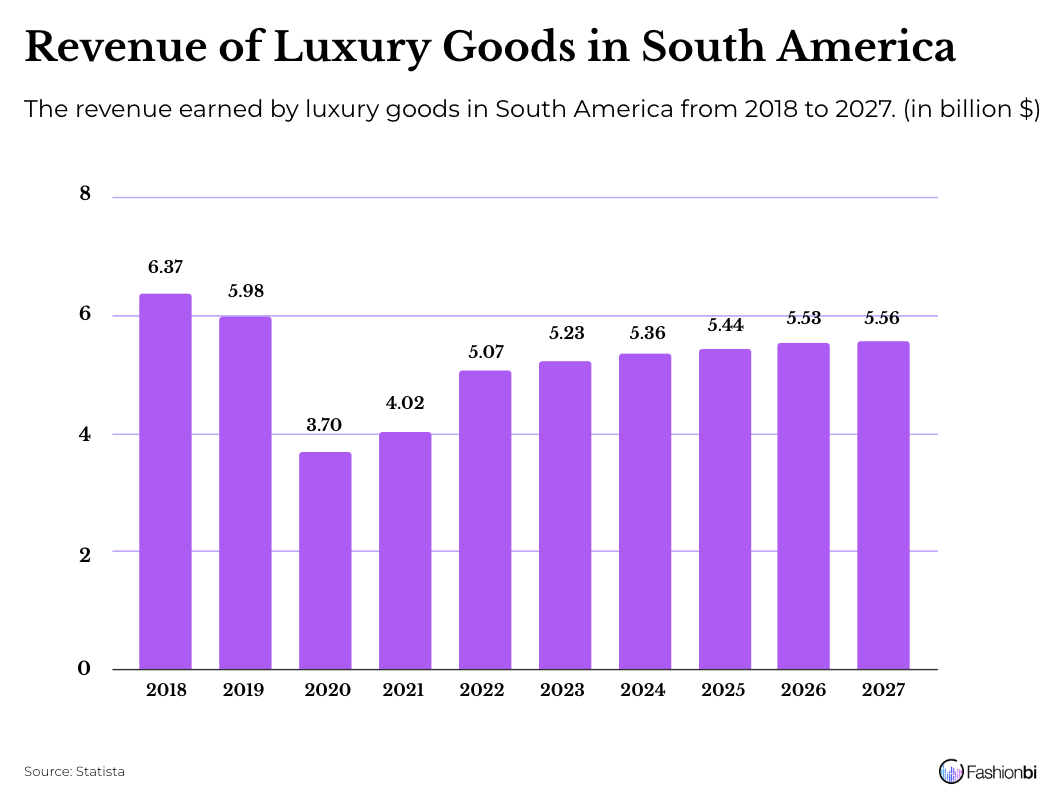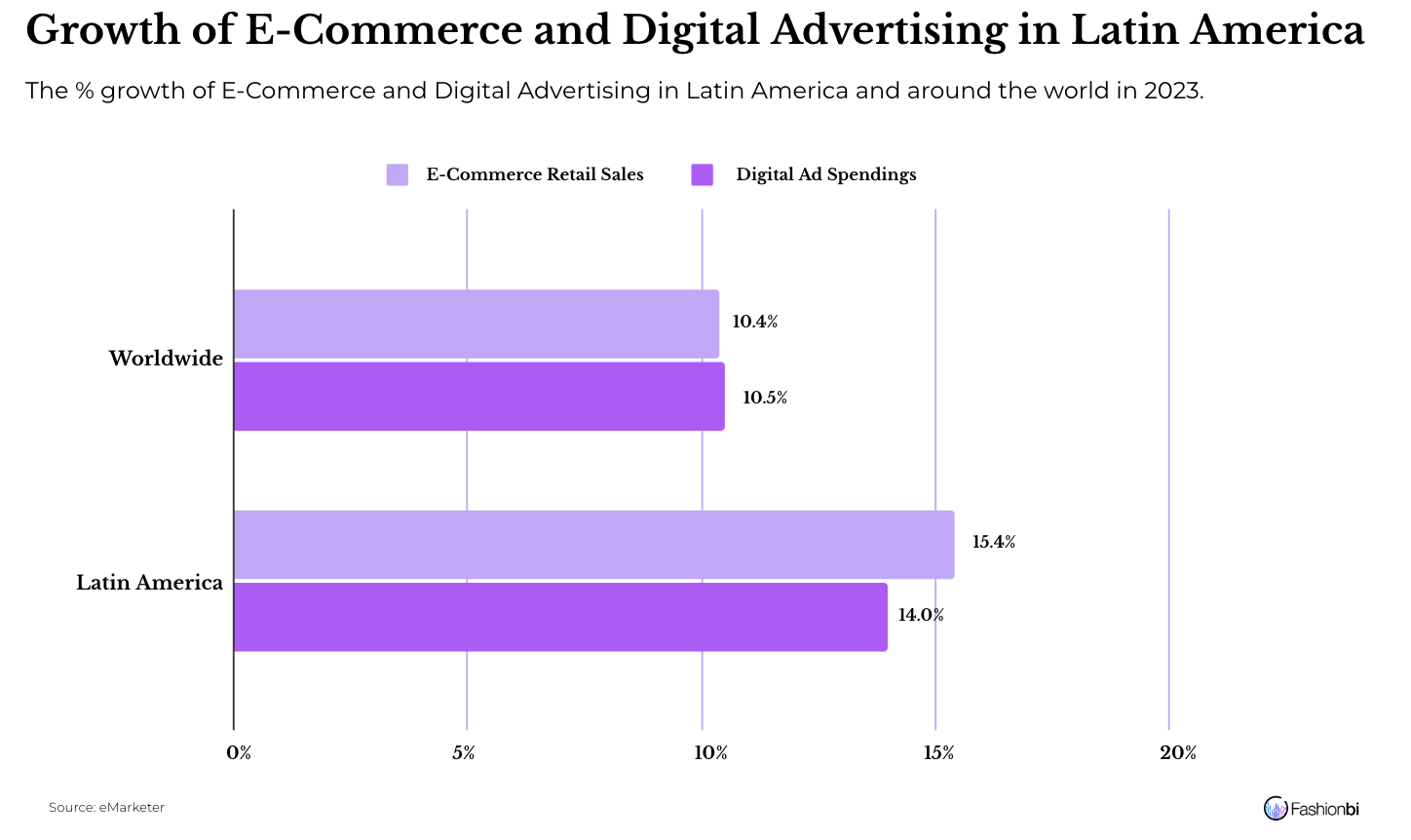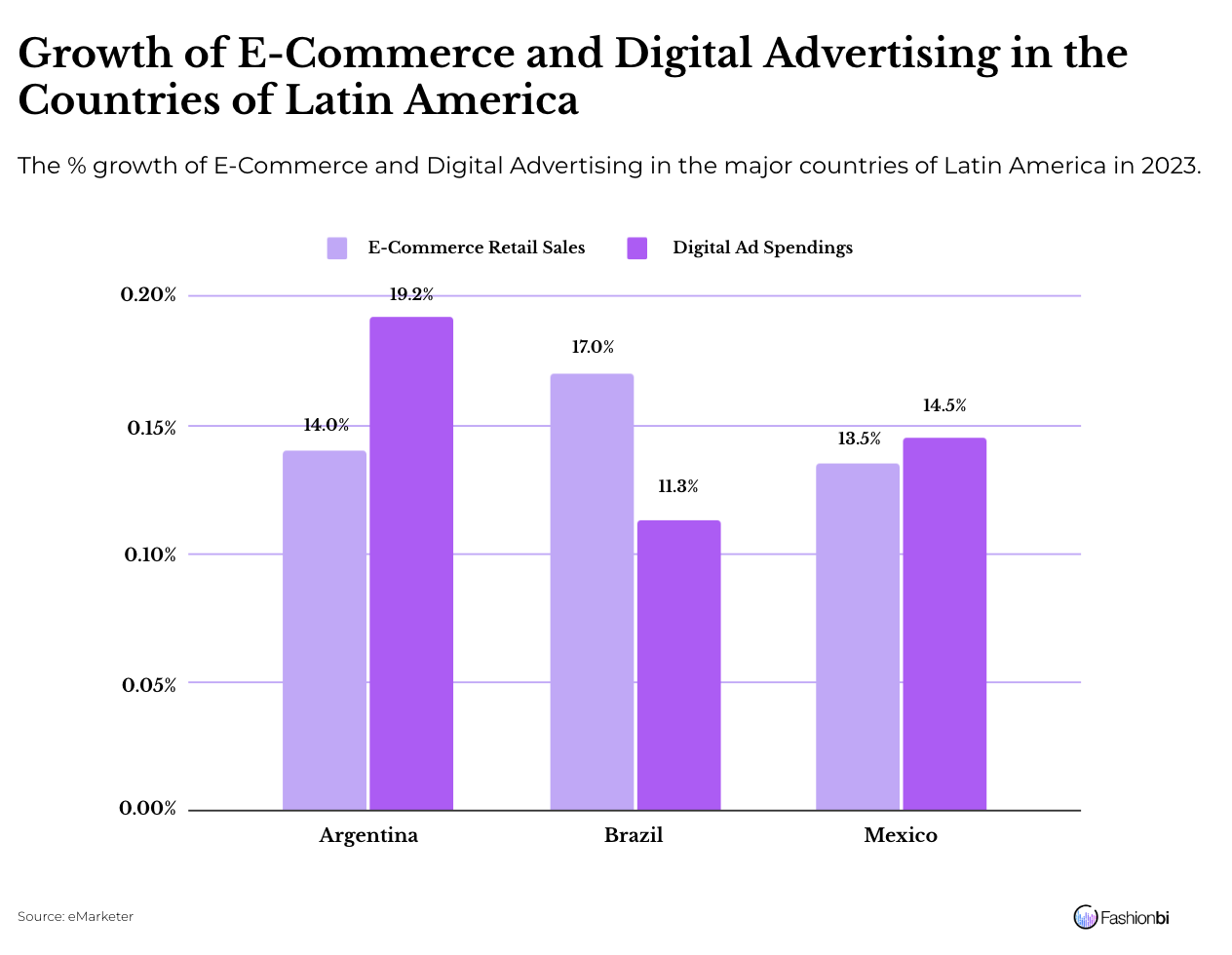Table of contents
The growth of Latin America’s Luxury market is estimated to further decline by the end of 2023. The reason behind this drop is subjected to the climbing inflation and static economic growth. According to the local consultancy Luxury Lab, the market has grown by 8% which is less than 12% growth in 2022 and 20% in 2021. This year’s earnings will sharply lead above the gross domestic product (GDP).
Despite this unfortunate situation, Latin America is becoming a crucial market for global luxury brands. Many luxury brands are upping their game in the region. Most of them are starting by opening up new stores in Mexico. For instance, Fendi’s 4,800-square-foot store in Presidente Masaryk high street and Dolce & Gabbana’s boutique in Artz Pedregal Mall. In May 2023, Dior hosted its Cruise 2024 show in Antiguo Colegio de San Ildefonso, Mexico City.
Revenge Spending
The CEO of the popular mall chain Iguatemi confers that in Brazil, the luxury goods market is coming back to the region in the form of “revenge spending.” After the economic boom in 2020, the luxury sales of 2022 have increased by double digits, as opposed to 2019.
At the time of the pandemic, Igutami unveiled its pioneer Balenciaga retail store in its Sao Paulo mall. Additionally, it extended its market by introducing the Iguatemi 365 e-commerce platform to brands such as Ermenegildo Zegna.
However, due to the various backdrops such as inflation and economic slowdown, the recovery is lagging.
Market Value Across Geography
Mexico and Brazil continue to be the largest fashion markets in Latin America. Based on research by Euromonitor, Mexico’s apparel and footwear market growth is expected to increase from $29.9 billion in 2023 to $30.5 billion (+1.97%). Whereas Brazil’s market share is estimated to rise from $29.9 billion in 2023 to $30.5 billion (+1.92%).
Countries including Panama, Colombia, Uruguay, Ecuador, Bolivia, and the Dominican Republic are set to witness higher GDP this year and the next one too. Others such as Haiti, Argentina, and Venezuela are still under setback amid the formal growth. According to the World Bank, Latin America, and the Caribbean will slow down by 1.3% in 2023 and increase by 2.4% in 2024.
There are numerous drawbacks for the regional fashion market to slowly recover from the pandemic, such as inflation, escalating poverty, well-established problems in infrastructure, political disturbance, and many other global economic inhibitions.
Yet, this region is an attractive spot for the fashion players and the current spending level across this region is interestingly worthy for a brand to invest in.
Many known global brands have not yet penetrated this region as they were busy extending their footprints over other budding regions over the past decade. However, the apparel and footwear market of Latin America has an overall retail revenue of $98.9 billion in 2023, which is higher than the Eastern European region ($89.2 billion) and closer to the Middle East and North Africa region ($105.1 billion).
The region’s market is growing and forecasted to rise 2.7% reaching $101.6 billion in 2024. But, the growth will be uneven across the region and its price points.

E-Commerce Boom
The pandemic led to various channel shifts in Latin America’s fashion industry, resulting in e-commerce benefiting a lot. This channel was already facing immense growth from 2016 to 2019. The igniting growth starting from 2020 led e-commerce to be the second largest channel in the region with a 13% share in overall sales of 2022. Furthermore, the diverse online options, such as social media selling, have got Latin Americans’ attention.

With that being said, retailers have to come up with new marketing and communication strategies to impress consumers. In 2023, over 35% of consumers look for “free shipping & delivery” and “best price” as their main needs to shop online.
Based on the report by the International Monetary Fund (IMF), as the inflation is still high at 11.4% and the GDP growth is on the verge of a cease, advertisers and retailers will face turmoil in 2023. But, digital advertising and retail e-commerce sales will have a double-digit increase.

Rising Interest Towards Domestic and Pre-Loved Goods
Many luxury sector players are acknowledging the region’s increasing interest in local luxury brands and many crucial consumers are purchasing from them. Karla Martínez, the Editor in Chief of Vogue Mexico adds that some designer brands such as Sánchez-Kane and Armando Takeda are focusing their efforts on sustainable fashion.
The director of Mexico Fashion Week, Mike Caro, explains that the rise is just not in the luxury segment where local brands are taking over the market share from global brands. Consumers are mixing up their products with Mexican and global brands.
Not just that, the market for selling second-hand products is getting popular now. Many e-commerce platforms such as Troquer and Rebloom in Mexico, GoTrendier in Colombia, and Vopero in Uruguay and Mexico, are selling used items from known brands such as Hermès, Dior, Valentino, and Saint Laurent.
Many popular houses are opting for Mergers and Acquisitions to enter this market. In 2022, Iguatemi purchased about 23% of Etiqueta Negra, Brazil’s established e-commerce platform to sell second-hand luxury goods, for $5.3 million.
Even in Argentina, a crisis-prone area is filled with second-hand products. The reselling retailers are using casual social media platforms to sell a combination of high-street fashion, luxury, and sometimes their own products through Instagram.
Cover Image: Dior Resort 2024 Show in Mexico City, courtesy Vogue Mexico